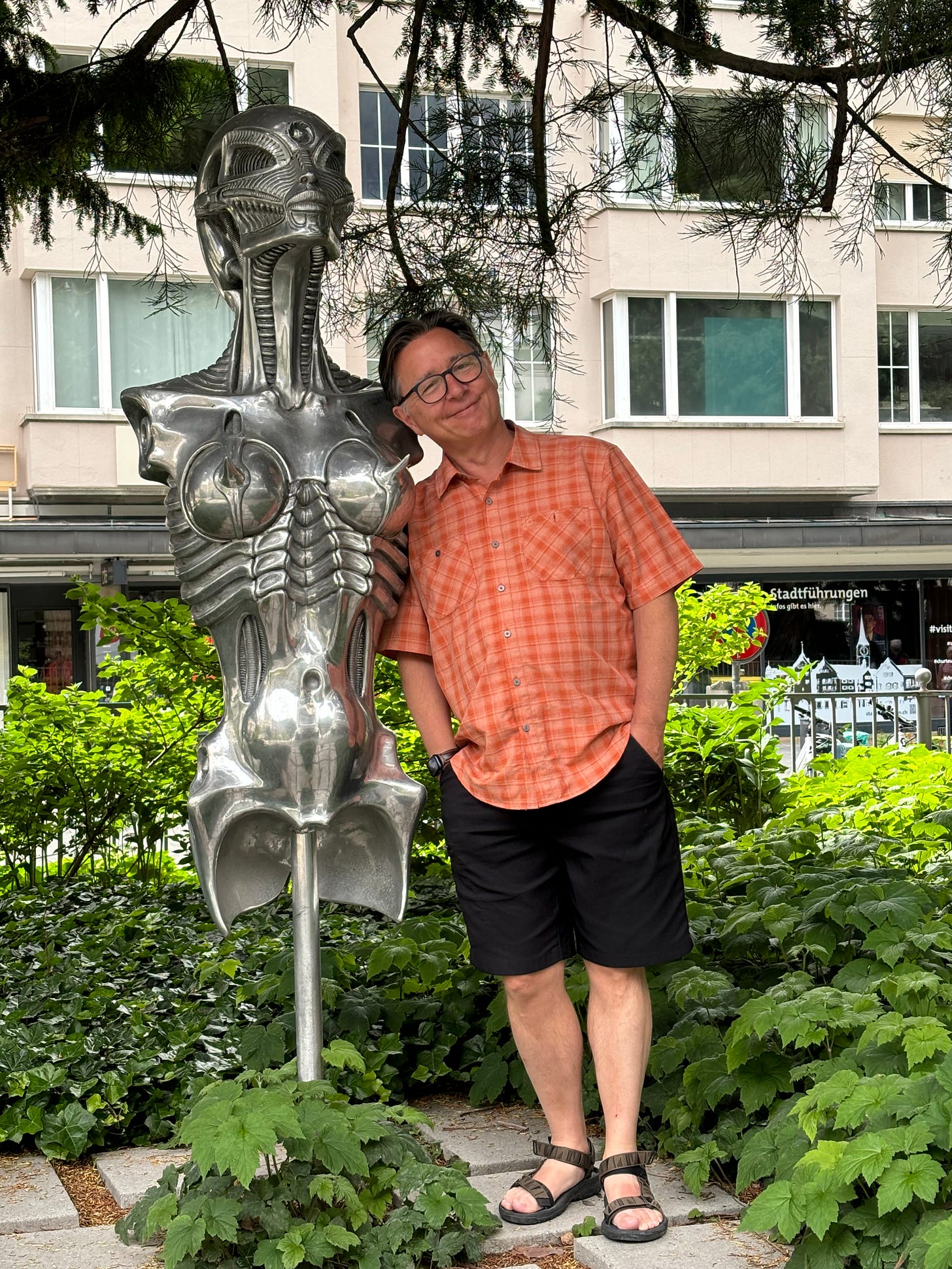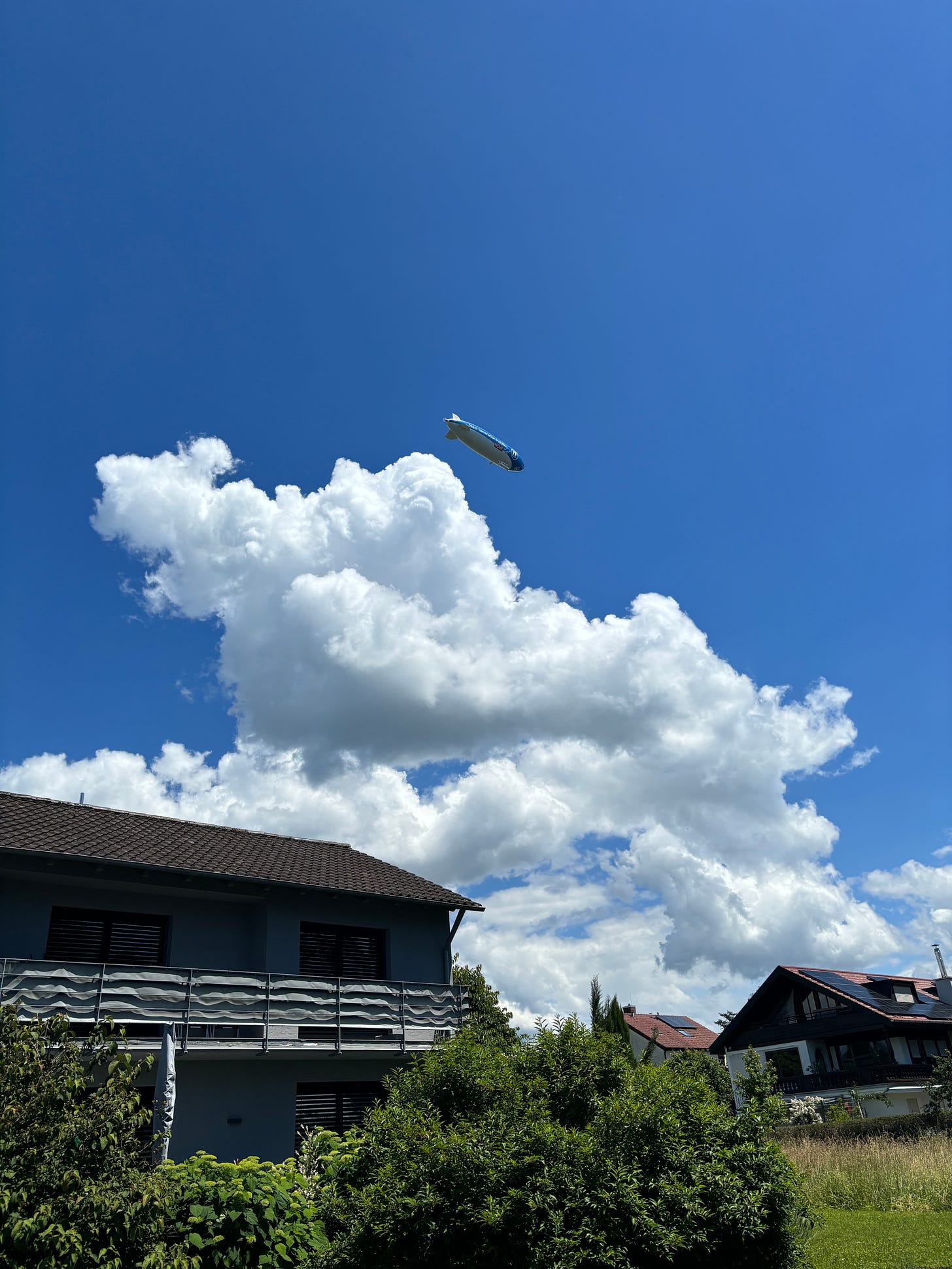Rolling on the Rhine River (part two)
A Trip on the Mushroom Clause
For an American, one aspect of cycle touring in Europe that feels very foreign is the Freedom to Roam. Even on private lands and estates, the general public has access to forests, mountains, lakes, and other places of natural beauty by law. The law and its enforcement vary from country to country and from province to province, but it translates into clear passage for cyclists. In Germany, where it is rooted in the right to forage wild plants, the law is known as Schwammerlparagraph, or “the mushroom clause.” The English sometimes call it ramble laws, which has lead to no shortage of blues riffs. Of course, the law is not a license to trample through crop fields or damage property, but it does allow tourists to move through designated areas in working farms and vineyards.
For the cyclist, this means that much of the trail runs through real agriculture where the chickens, cows, sheep, and goats also roam freely. It tends to bring the tourist closer to the food chain than any trip in America, where the heavy emphasis on private property keeps the public separated from factory farms.
After another descent out from Ilanz, the trail levels out and much of the ride happens along dikes and berms overlooking the Rhine. The river becomes a major river quickly and central to the region’s culture.
The first international border crossing is easy to miss, as is the entire country it involves. At only sixty-two square miles, one passes through Liechtenstein in less than an hour. Best known as a tax haven, there seems little to distinguish its 40,000 citizens from their Swiss neighbors, and there's nothing but a sign at the border. The country's best-known souvenir is a stamp on your passport. Although it has no real legal value, for cyclists who must carry any purchases for another 800 miles, it is one of the few mementos worth acquiring.
The people we encountered throughout the Alps were uniformly cheery and helpful, but a night in the 5,500-year-old city of Chur makes it clear that there’s a darkness lurking in the region’s psyche. H.R. Giger, best known for a creepy Emerson, Lake, and Palmer album cover and the Alien franchise’s Xenomorph was born and raised here. His sculptures and images dot the city.
Freedom’s Just Another Word for No Place Left to Stay
A long bike tour brings a unique sense of freedom—you get to pick and choose when and where to go. In Europe, the well-developed train system makes that even more true. Choosing to stay for an extra day in one place or take a side trip can be done easily. There are considerations, though. Riding into a small town late in the day risks not finding a room. In Ilanz, Eva and I ended up in two separate rooms intended to house people too drunk to get home on their own. The rooms were barren and comfortless. From that point forward, I made a point of booking our next room before heading out each day. Booking.com is pervasive in the European countryside and includes many Airbnb-type rooms as well as conventional hotels.
There are also active online communities for bike tourists, including platforms where people offer to host touring cyclists in their homes for free as a sort of pay-it-forward service. The most popular U.S.-based one has a long, successful track record of helping cyclists, but in recent years, it has become known for mismanagement and litigious behavior, so I won’t recommend or name them here. As Dylan once sang, “Even the swap meets around here are getting pretty corrupt.”
In some ways, the cell-like accommodations in Ilanz were appropriate. Bike touring enforces a kind of harsh simplicity. Because you must carry everything for hundreds of miles, simplifying your pack is the focus of much of the planning for a ride. And once you're on the trail, it's easy to second-guess everything. "Did I really need this third t-shirt?"
Laundry and device charging are a constant concern. I often took my riding clothes into the shower with me after a ride, lathering them up with my bar of laundry soap and rinsing them in the sink afterward. That was the easy part-- Getting things dried before packing up in the morning often involved hanging clothes out a window or clipping them onto a fan.
The hotels are used to it. The cycling trail runs on the same ground Romans and Franks have been trading on for millennia. Over time, small towns have grown every five to ten miles along the trail always with a place to get a beer. Or those more modern innovations, a cappuccino or a sandwich.
Over the Hills and Far Away
As the Rhine leaves the Alps, it flows into the Bodensee (or Lake Constance as it’s known in English), a favorite tourist destination for Europeans, with resorts, parks, and casinos scattered all along its coast.
We rode into the Austrian resort town of Bregenz, on the Eastern tip of the lake.
Bregenz is best known for Bregenz Festspeile, a summertime classical music festival. We arrived a few weeks before the event but the beginnings of an elaborate set could be seen on a barge in the lake as crews were preparing for Carl Maria von Weber’s “Der Freischütz.”
In the Summer season, festivals, musical events, and sports events are daily happenings all along the river. It’s important to know about the more important ones as you plan your trip, whether it’s so you can plan to join in on them or know when all the rooms in a region are going to be booked for a futbol match. (Much of my time in Germany involved avoiding the rooming shortages caused by EUFA Championship matches.)
Casual cycling tours around the lake are quite popular, and the path can get crowded with clusters of seniors on e-bikes riding from café to bar to boat dock. Ferries run back and forth across the lake and other pleasure boats dot the water on sunny days, but one of the most unique tourist opportunities on the lake is the chance to ride in an actual Zeppelin.
The dirigible maker still operates in the German city of Friedrichshafen and the airships, filled with non-flammable helium, are a regular sight over the lake. We didn’t spend the 500 euros each for the 45-minute trip, so I can’t say what music plays during the voyage, though I hope it’s the first half of Physical Graffiti.
Austria, Germany, and Switzerland all border the Bodensee, but the Rhine exits into Switzerland once again. At Schaffhausen, the Rheinfall, Europe’s most powerful waterfall, marks the next stage of the river.
The region around the Bodensee had seen record-breaking rainfall and massive flooding in the weeks before our ride and nowhere was that more evident than at this cataract fourteen miles downriver from the lake. The torrent had swamped parts of the viewing platform and had bent the trees growing from the rocky islands that usually stand above the waters.
After the Rheinfall, the river becomes navigable for shipping, and the nature of the towns along the river changes somewhat. The first sign of the change is the first major city along the ride, Basel.
Although we missed the opera in the harbor of Bregenz, we were just in time for one of the most important events in the art world: Art Basel. Thousands of dealers and artists swarm the city for much of June. Although the main ticketed exhibition space is in the convention space, elaborate installations, and parties are staged on street corners, hotels, and bars throughout the city, with many of the world’s most important artists out and about everywhere. When you’re a cyclist carrying your entire wardrobe in a pair of small panniers, Art Basel is the opportunity to be seriously underdressed just walking down the street.
Basel also marked the end of my wife’s ride. When I first planned this trip, I imagined the entire thing as a solo effort. But riding alone from the hotel that morning, I felt bereft. Until then, she had been the one who had stopped us to enjoy a view or take in a detail. Now there was just the ride.
The river is wider and slower after Basel. It also becomes semi-French as the Rhine serves as the border between Germany and France.
My next stop was the French city of Colmar, one of France’s most romantic cities. With its half-timbered houses lining narrow passages, flower boxes overflowing with colorful blooms everywhere, and picturesque canals running throughout, it is known as “Little Venice.” Colmar is also central to the Alsatian wine region and has the culinary chops that come along with that. It’s a lousy choice for a solo rider who had just left his spouse behind that morning.
Song of the Week
This one might be a little bit on the nose, but you gotta do what you gotta do.



I assume this will certainly compel your wife to redo the end of the ride with you sometime soon!
Enjoyed this journey through European countryside I've not been through - yet.
And any Zep references are pre-endorsed by this guy (points to self) who listens to a version of "Going To California" and "That's The Way" almost every day before sleep.